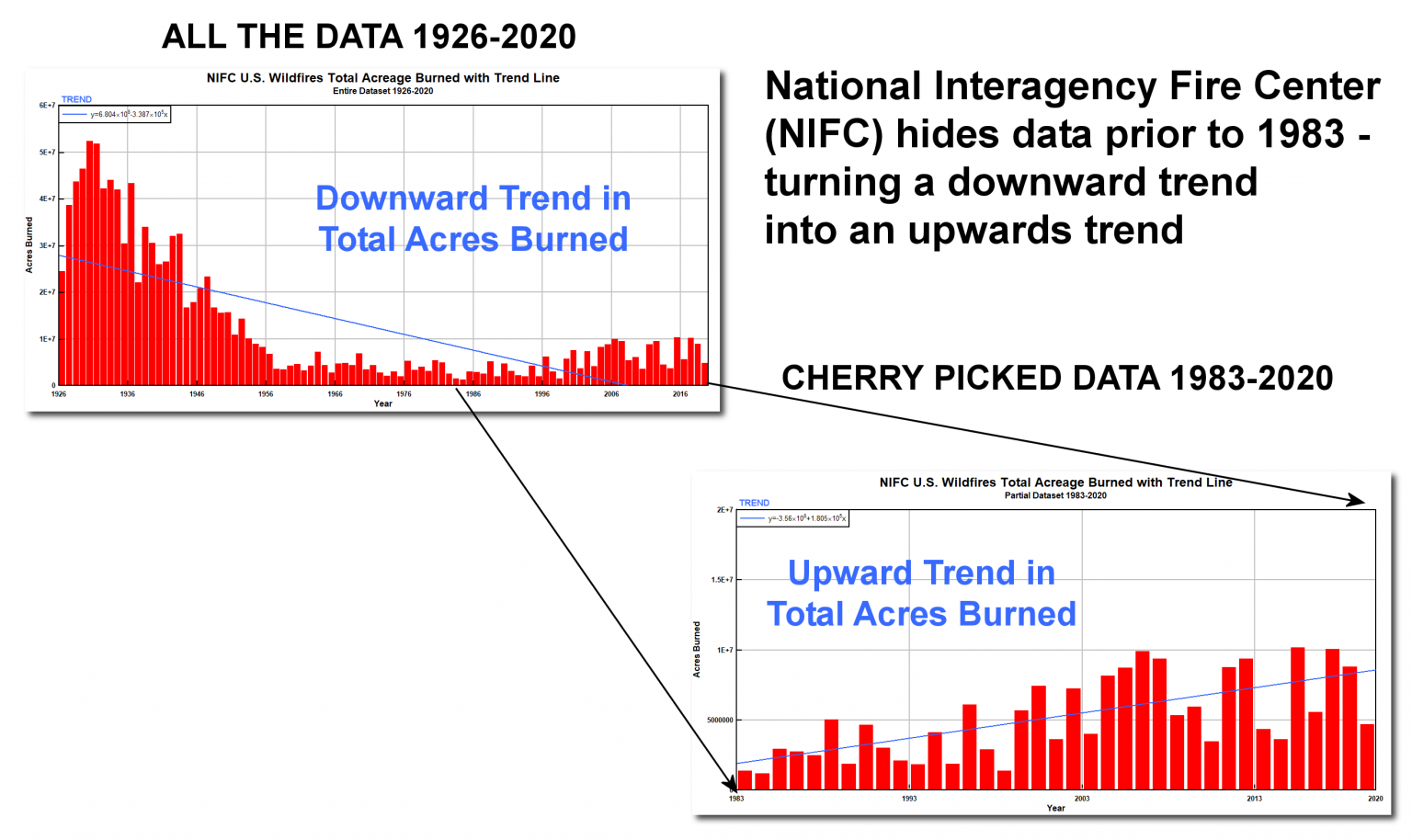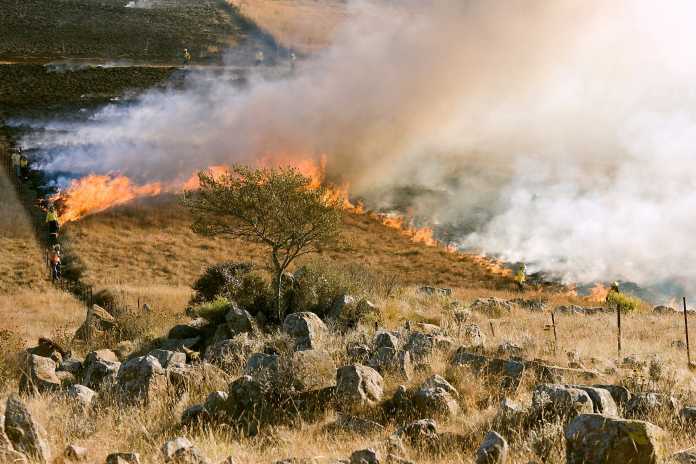A recent article in The Sacramento Bee (The Bee) describes a study claiming the carbon dioxide emitted by California’s busy 2020 wildfire season dwarfed the 71 million ton emission reduction the state has achieved annually through its climate and energy policies. Wildfires produce carbon dioxide emissions, and humans have contributed to the recent increase, but climate change is not a significant factor. Contrary to the underlying message of the story, the available data indicate wildfires are not more numerous nor do they burn more acreage now than in the past.
The Bee’s article, “California wildfires reversed years of climate change progress in 2020 alone, study says,” interviews authors of a study who calculated carbon dioxide emissions produced in the 2020 wildfire season. The Bee says the study found the 2020 wildfires “released nearly 140 million tons of carbon dioxide into the air. That was nearly as much greenhouse gas emissions as all the passenger vehicles in California generate in a typical year.”
Wildfires is can destroy wilderness, homes, and be deadly to people and animals, so efforts to reduce or mitigate them are reasonable. However, the corporate media’s alarm over recent wildfires, which have occurred in regions historically prone to such events, does not reflect long-term wildfire trends.
Those arguing climate change is making wildfires and their attendant CO2 emissions worse often reference charts and data going back to the 1970s or 1980s to support their claims. Due in large part to active forest management, the amount of acreage lost to wildfires was at historic lows at that time. As detailed, in Climate Realism, here, here, here, and here, for example, changes in forest management after the Reagan administration resulted in overcrowded forests, increasingly stocked with dead and dying trees, and more underbrush growth. This led to a massive increase in fuel load, so that when wildfires occur, the size of the area burned began rising after many years of decline.
Data provided in Climate at a Glance: Wildfires shows that contemporary U.S. wildfire extent is actually far below that of the early 20th-century. Cherry-picking data from the 70s onward hides the much worse fires of the past, shown in the graphic below.

While many recent fires have had human-causes, including arson and downed power lines, the 2020 fires were largely caused by repeated lighting strikes along the already naturally dry coastal grasslands.
The Intergovernmental Panel on Climate Change finds no climate signal, nor increasing trend, behind thunderstorms, or lightning occurrences. Also, NASA satellites have documented a global long-term decline in wildfires. NASA reports satellites have measured a 25-percent decrease in global lands burned since 2003.
Examining wildfires in California in particular, research shows massive wildfires have regularly swept through the state. Indeed, a 2007 paper in the journal Forest Ecology and Management reported that prior to European colonization in the 1800s, more than 4.4 million acres of California forest and shrub-land burned annually. As compared to the 4.4 million California acres that burned each year prior to European colonization, only 90,000 acres to 1.6 million California acres burn in a typical year now.
The Bee story continues a dangerous call by academics and politicians for California to do even more to fight climate change, because natural sources of carbon dioxide like that from wildfires easily overshadow California’s emissions reductions.
According to The Bee, Michael Jerrett, the lead author from the study, claims “the devastation of 2020 — and the fact that fire seasons are generally getting worse in California — will put pressure on policymakers to reduce greenhouse gas emissions in other segments of society, such as motor vehicles, if the state can’t curb damage from wildfires.”
California’s Air Resources Board now plans to include wildfire emissions in calculating progress towards its 2045 emissions reduction goals, The Bee reports. This means that California residents will suffer emissions cutbacks—which translate to electricity and/or personal vehicle use restrictions– to accommodate emissions from natural seasonal phenomena like wildfires.
It makes sense for the people of California and The Sacramento Bee to be concerned about wildfires, but the best way to reduce wildfires is to focus on their underlying causes: poor forest management and poor land development policies. Climate change is not a significant factor. Trying to fight wildfires by limiting the use of fossil fuels for energy will only make a bad situation worse, further burdening California residents and the state’s electric power grid, while doing nothing to prevent climate change or reduce wildfires.

















